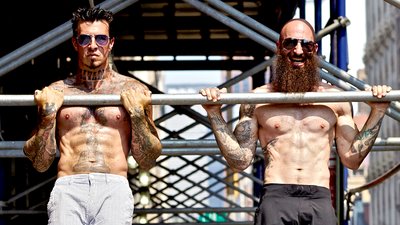If you've spent much time in a mainstream gym, you've probably noticed more people using the lat pull-down machines than doing actual pull-ups. This may cause you to think that machines are the best way to train the movement pattern of pulling down with the lats and other muscles of the middle back.
On the other hand, a lot of calisthenics fans are quick to write off the benefits of anything that isn't bodyweight. I won't go quite that far! There's a reason that the lat pull-down has been a staple movement in gyms for decades.
So which one should take preeminence in your training? Let's compare them side by side.
Simplicity: Pull-Up Wins
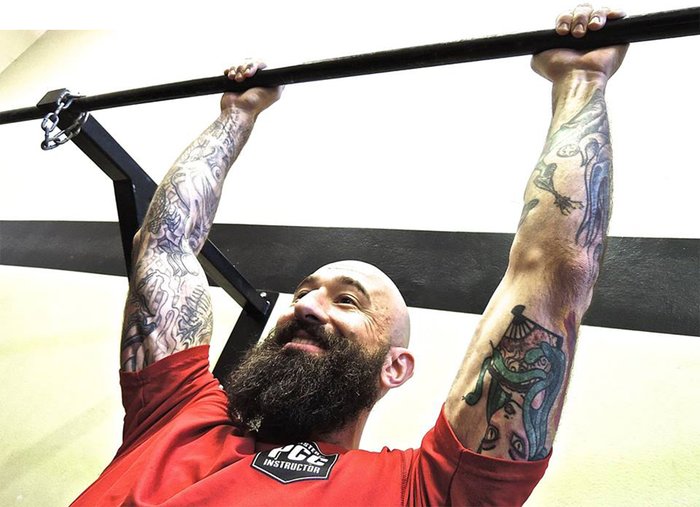
Part of what makes bodyweight strength training so appealing is that you can do it anywhere. It's easier than ever to find a public park with a pull-up bar, or to install one in your own home. Outside of a gym, however, you are very unlikely to encounter a pull-down machine.
On the other hand, even if you can't access a pull-up bar, you can still improvise by performing pull-ups on other surfaces such as ledges, street signs or doorframes. If you're relying on a pull-down machine to work your lats, they'll be out of commission any time you can't get to the gym.
Likewise, if the program says pull-downs, and your gym's cable machines are all occupied on a busy January evening, you have no choice but to wait. On the other hand, if you're looking to do pull-ups, you can do them on dedicated bars, but also on neutral-grip bars, the side of a power rack, or rings. In many gyms, even the squat racks and various machines have pull-up bars built in. Trust me: You have options!
Approachability: Pull-Downs Wins
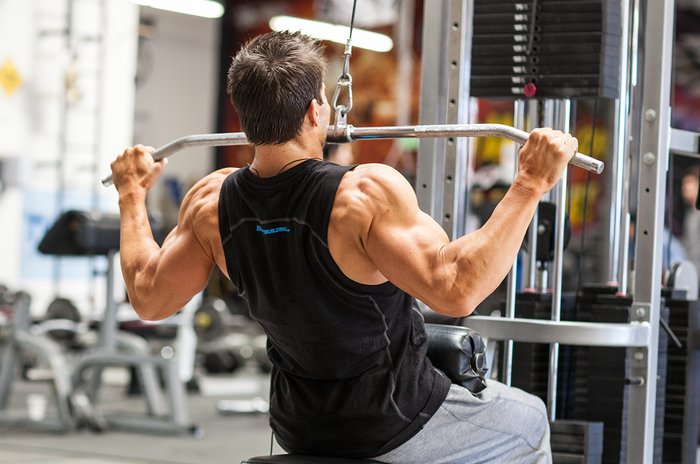
I've often maintained that any able-bodied individual has the potential to do lots of pull-ups. Unfortunately, most people have yet to tap into that potential. Disappointing as it may be, many gym-goers are incapable of doing even one clean pull-up.
While there are bodyweight regressions that any beginner can utilize to help work toward a pull-up (flex hangs, negative pull-ups, etc.), I recognize it can be more encouraging for a beginner to start out with the pull-down machine. It's less of a shot to the ego, plus you can jump right in and begin with the full range of motion on day one.
Furthermore, larger folks tend to have a harder time with pull-ups. The more you weigh, the more resistance you'll need to overcome. Though I like pointing out that long limbs will make your leverage less favorable regardless of your exercise modality, heavier people will find the pull-down more accessible, particularly if they are trying to work within the rep range of 10-15 generally recommended for hypertrophy.
Strength Gains: Pull-Up Wins
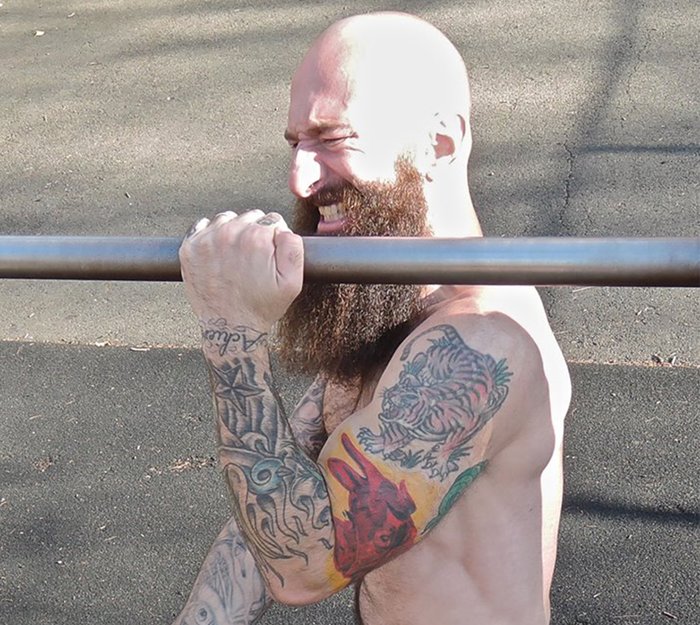
There's no question that the pull-up builds overall pound-for-pound strength better than the pull-down. Pull-downs are great for beginners and heavy-set individuals, but pull-ups will keep you honest about real-world functional strength. No matter your size, the pull-up provides an objective assessment of your strength-to-weight ratio.
And while the pull-down machine can potentially provide more overall resistance if you use the entire weight stack, there are so many variations of the pull-up that you can always find a more challenging progression without the need for additional weight.
Normal pull-ups getting too easy for you? Maybe it's time to start working toward a one-arm pull-up or building your reps up to a higher number such as my 20 pull-up challenge.
Adaptability: Tie
Pull-down machines typically come with handles that can be swapped out for other handles, allowing for various grips and hand widths, but the pull-up is in a league of its own when it comes to variety.
In fact, the pull-up is such a versatile exercise that there are literally entire tournaments dedicated to showcasing the constantly evolving number of freestyle pull-up variations.
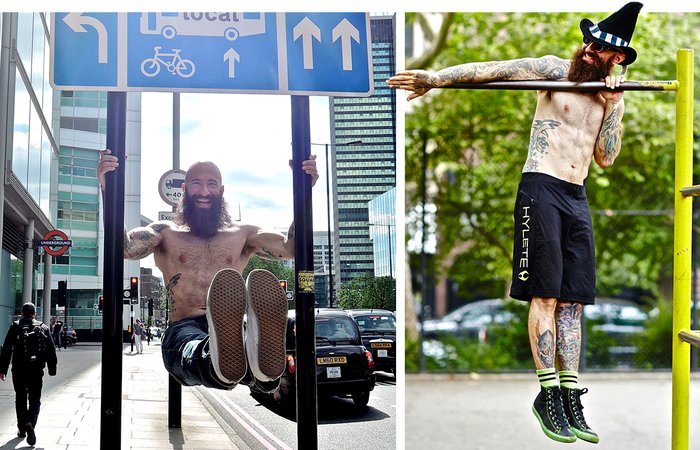
The pull-up is such a versatile exercise that there are literally entire tournaments dedicated to showcasing the constantly evolving number of freestyle pull-up variations.
On the other hand, the pull-down machine makes it easy to adjust and monitor how much weight you are lifting. Since you can't change your body weight as quickly and easily as you can move a pin farther down a weight stack, the pull-down can be advantageous for things like dropsets, percentage-based training, and high-rep training.
Keeping these two different aspects of adaptability in mind, I'm going to call it a tie in this category.
Muscle Activation: Pull-Up Wins
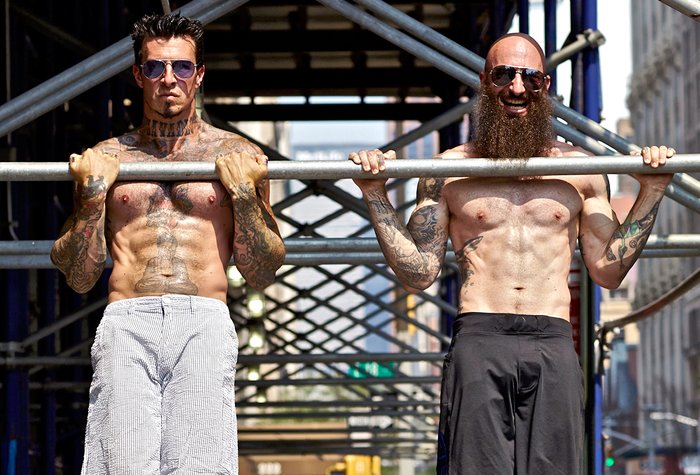
There's no question that the pull-up gives you more bang for your buck than the pull-down machine.
I have found that the pull-up not only elicits tremendous activation of the lats, traps and other upper-back musculature, but also activates the abdominals more than many conventional ab exercises like sit-ups and crunches.
The pull-down, on the other hand, intentionally removes the muscles of the core from the equation by having the practitioner seated with their legs fastened underneath a harness.
If you're looking to work as many muscles as possible in an efficient and cohesive manner, there's no question that the pull-up gives you more bang for your buck than the pull-down machine.
Overall Winner: Pull-Up
So which is the winner? It's obviously the pull-up. I think we all saw that one coming.

It's obviously the pull-up. I think we all saw that one coming.
If you're not a novice, and you're only going to do one of these moves, make it the pull-up. And if you can't do pull-ups right now, I recommend making that a goal. My wife Grace has written that getting to the point where she could do a strong chin-up was a game-changer for her, and many people have told me the same thing. I doubt anyone is saying the same thing about the pull-down station!
But of course you don't have to choose one or the other. Pull-ups and pull-downs can be paired within the same workout. You can use the pull-down to warm yourself up prior to your pull-ups, or to burn yourself out after you're too fatigued for more of them. Try different methods, and let your own firsthand experience be your guide.
Now let's go do some pull-ups!

